While intentional, welcoming design has become a necessity for new dispensaries, some stores have been creating and defining elevated cannabis shopping experiences for a long time. Apothecarium, for example, has been setting design trends for a decade.
The classy dispensary brand’s newest location is slap-bang in the middle of the bustling University of California, Berkeley, campus, an affluent, youthful neighborhood that once was ground zero for the countercultural awakening of the 1960s. While the new store pays subtle homage to the rich history of its surroundings, it builds faithfully on Apothecarium’s reputation for creating luxury experiences.
“I think when we first launched, we established ourselves at the cutting edge of design for dispensaries,” said Vice President of Operations Chase Chambers, who has been with the company since the first location opened in San Francisco’s Castro neighborhood in 2011. Right away, the store was championed as a beautiful outlier in the Proposition 215 era, which was defined aesthetically by neon-green crosses and chalkboard flower menus.
“The original store was built out of the founders’ vision of what a little dispensary could look like, and we enjoyed a lot of success early on,” Chambers said. “It was very neoclassical in its design. Over time, we kept making improvements and really established ourselves as a fine retailer in the Merchants District and the wider community.”
Opening challenges
Opening five stores helped the group hit its stride operationally, but the pandemic presented a huge hurdle for the Berkeley shop. “We were about halfway through construction in March of 2020 when COVID hit,” said Chambers. “We were working under regulations set by the city, and then they shut down construction completely.”
The store officially opened its doors in July 2020, and although business was slow to start, the recent return of college students and tourism helped get the registers ringing. “We’ve started to see regular customers and faculty moving back into the neighborhood and have since picked up a lot of momentum and started to establish a good business,” Chambers said. “Now that things have started to open up, we’re getting back to thinking about ways our customers are interacting with us in our design and floorplans.”
There is an elegance in the simple efficiency at Apothecarium’s Berkeley location. Years of intuitive refinement by Chambers and his team dovetailed perfectly into the pandemic and its necessity for speedy, contactless transactions. The result is a space that maximizes customer experience without taking its sight off the sale.
“Early on, we weren’t really thinking about ways we could communicate with the customer without saying anything to them,” said Chambers. “With this location, we wanted customers to see the beautiful space but also feel the solid anchor point, which is the reception desk. We want people to know as soon as they walk in that this is where you get help, so you should stop here.”
Design considerations
Like the company’s other shops, Apothecarium Berkeley greets its guests with a unique medallion tribute to the city on the floor, framed in a sea of black honeycomb tiles. Behind the reception area is an open frame wall that showcases the height of the foyer and the open space, giving customers a tease of the beautiful finishes throughout the store.
The open-plan waiting area is punctuated with marquee brand installations housed in glass jewelry cabinets. In August, they were occupied by Seth Rogan’s Houseplant, savory cooking brand Potli, and Pure Beauty, which recently leveled up with a $5-million investment from Timbaland and Nas, led by Subversive Capital and The Parent Company. The waiting area contains several little seating stations with QR codes on the tables, creating opportunities—in a post-COVID world, of course—for staff to sit with customers and walk them through the products on the menu.
Aesthetically, the dispensary gleams and glints, gilded with brass and marble like an upmarket chocolatier. An ornate classic glass chandelier hangs from the ceiling, casting light throughout the white room, while wall sconces, like pearls inside a golden shell, light a painting by Kalani Ware.
The design firm, Marin-based Urban Chalet, opted to install a slanting roof that slides from the center of the ceiling down to the area behind where the budtenders greet customers, creating a wedged sense of intimacy in what otherwise might have felt like a cavernous, empty room.
Each budtender has a counter space and a menu on a two-way point-of-sale system that faces the customer. Together, they walk through the products, discuss any questions, and then complete an order. “That was something we were planning on doing pre-COVID, but it became a really great shopping experience and an effective way for us to maintain our more traditional one-on-one consultation experience during the pandemic.”
On the outside, the store fits perfectly into the lively, independent intersection of Telegraph and Durant. Chambers said the company was careful to make the store appealing and familiar from the street level, installing lots of glass to keep it “very open and welcoming.”
“We completely rebuilt the façade and reconnected it to the street,” he explained. “You can see right in and it never really shuts itself off from the street. We strived to make it look inviting and high-end, but when you look into the dispensary, you see it has more of the flavor of the Berkeley neighborhood. It’s a little bit more intellectual and bohemian while at the same time earthy and timeless.”
Baked-in flexibility
Even prior to the pandemic, Apothecarium had baked flexibility into its designs. “While our big, beautiful stores weren’t going to be utilized as they were intended, within those designs we created channels of convenience, visual clues, and focal points for customers when they’re in the store so they know how to get what they need.”
QR codes are among the most obvious of these nudges—the now-ubiquitous little pixelated portals are scattered around the store, encouraging shoppers to connect with the digital menu, which itself was an important lifeline during the pandemic. Like many other dispensaries that were forced to adapt, Apothecarium leaned heavily on ecommerce and built a simple process to fulfill online orders and in-store pickups with minimal risk.
“We did a lot of business through our website,” Chambers said. “Customers could come in and quickly pick up their order at the front counter and access customer service just as easily as if they had come into the dispensary to have an in-person consultation with us.”
The dramatic shift toward digital convenience comes with its own threats, and Chambers acknowledged brick-and-mortar operators need to do more to get people out of their homes in this new era of delivery and direct-to-consumer sales. Brands nowadays have options for bypassing retail storefronts. “You really have to create an experience for customers that makes them want to come in and keep coming in, because they can just as easily get the same products delivered right to their door,” he said. “Our biggest challenge is to keep our customers.”
To stay ahead, Apothecarium makes a point of engaging its customers and soliciting feedback, asking what kind of experiences customers want and then responding accordingly.
“You want every square foot to have an intention, a high design that lends itself to that intention so it keeps customers engaged. If you don’t, it’s just wasted space,” said Chambers. “I think something we’ve learned a lot over the years is if you’ve got the space, then activate it with something that is a special experience for the customer, because that will keep them coming back.”
Apothecarium Berkeley Cannabis Dispensary and Delivery
2312 Telegraph Avenue
Berkeley, California 94704
Open daily from 9 a.m. to 9:30 p.m.







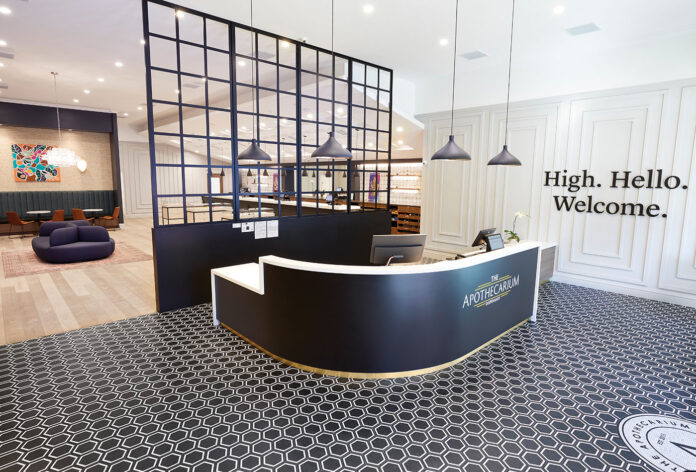
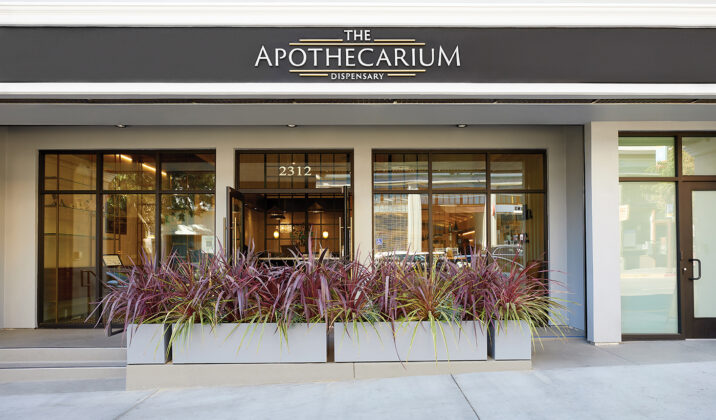
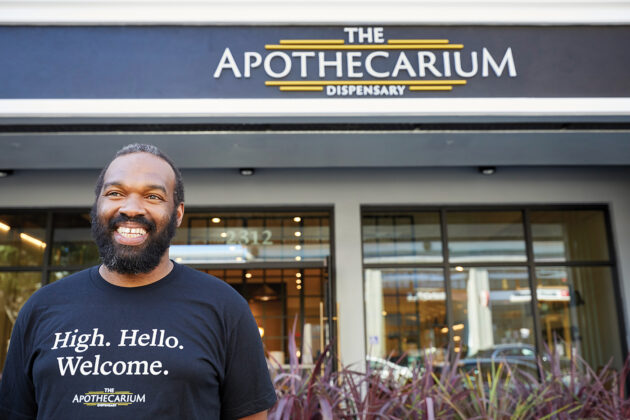
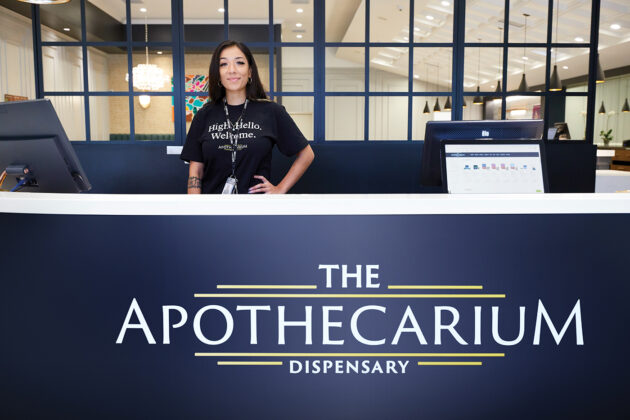
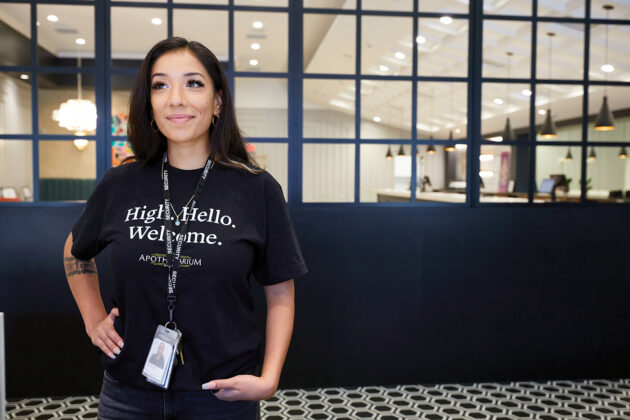
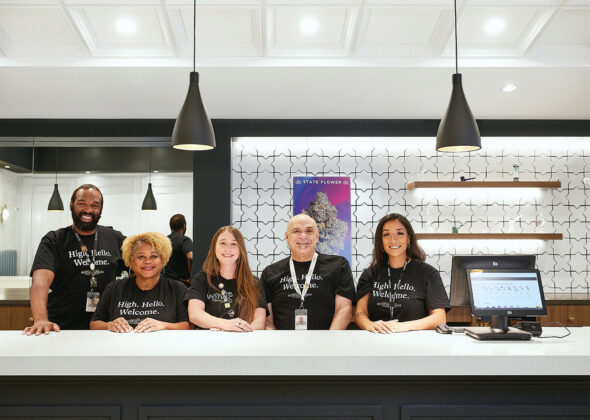
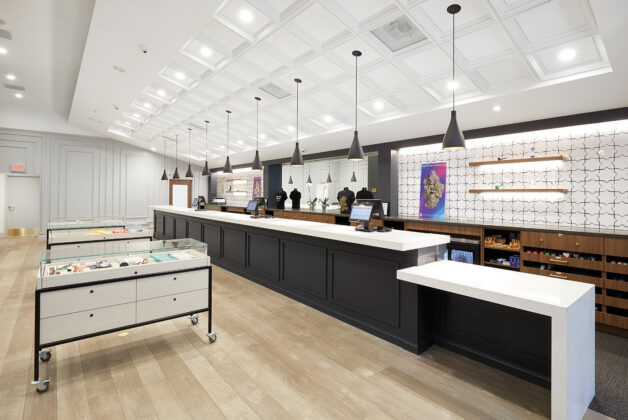
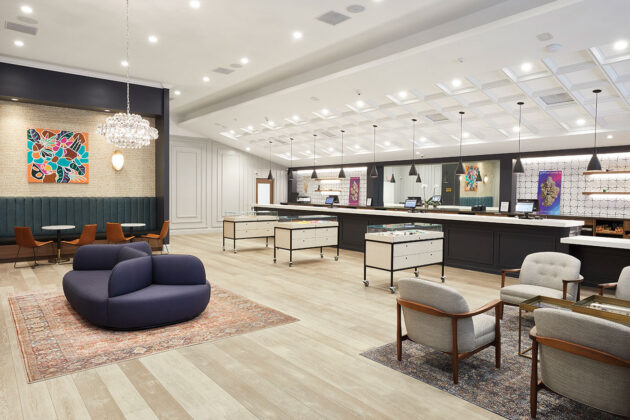
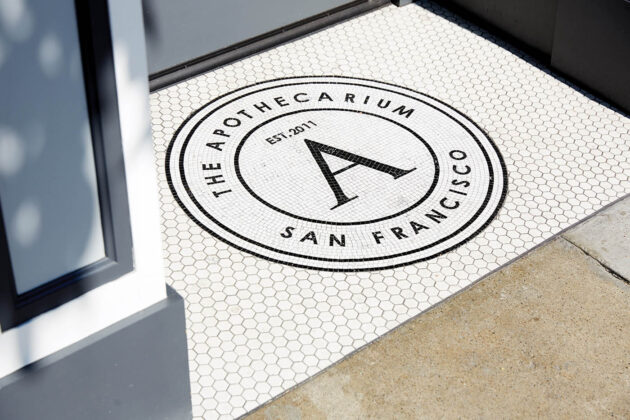
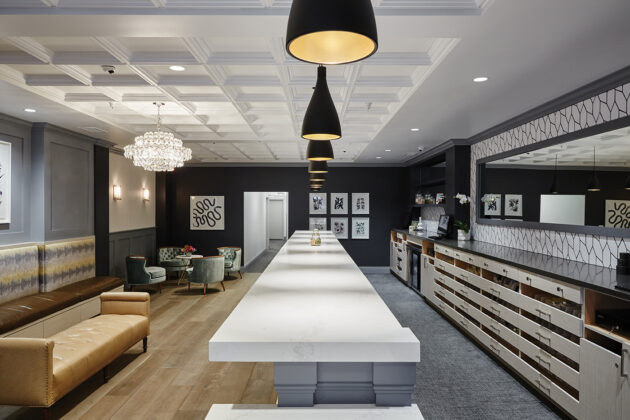
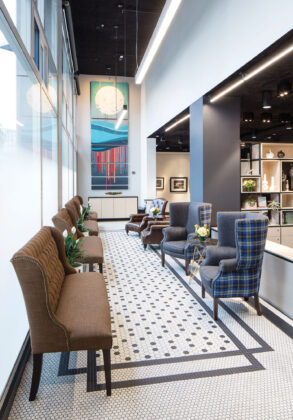
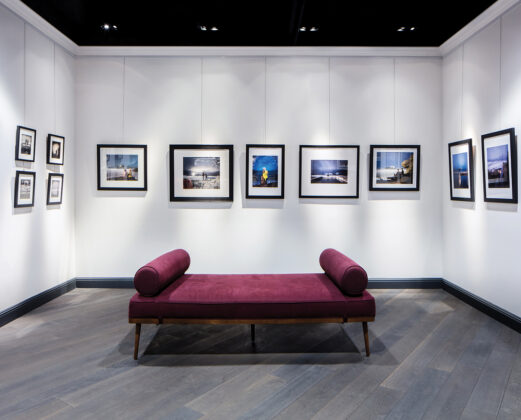
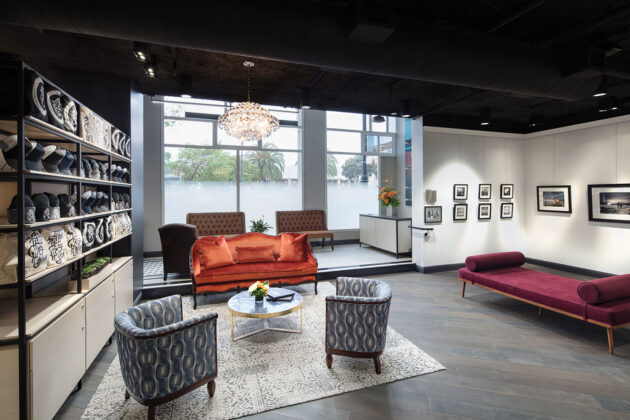
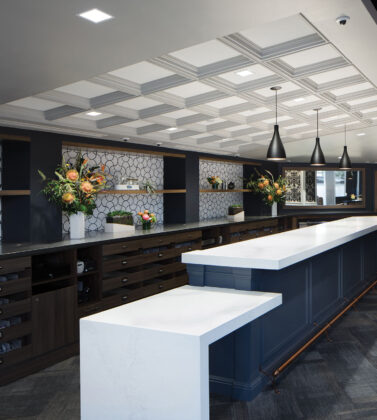
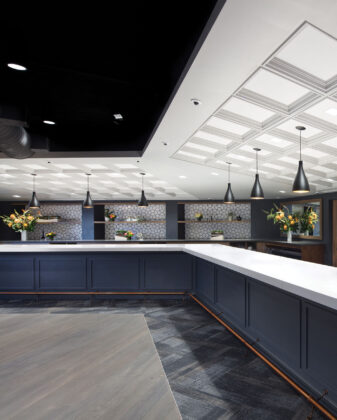
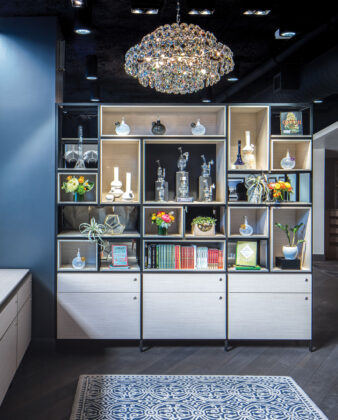



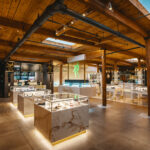

[…] to embrace the status quo and, for them, the decision to be different proved worthwhile. From old-school apothecary references and 1950s diner-style checkout counters to infused airport terminals and one of the world’s […]
[…] operators. We can even have franchise arrangements where these dispensaries would open under our The Apothecarium banner, which is exciting for […]